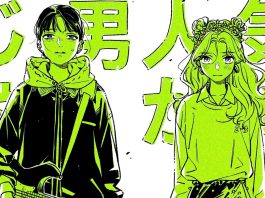 Flea
Flea
Cartoonist: Mara Ramirez
Publisher: Fieldmouse Press / $16.95
September 2025
Who is Flea? We’re introduced at the outset of the graphic novel that shares her name: her likes, dislikes, some odd facts about her. Before Mara Ramirez’s Flea was drawn and published, there was Flea; after you close it, she remains. Unapologetic, some might say brash, and all too human, which is to say flawed. In a word: perfect.
Now that we’ve met, the story becomes a series of vignettes. You want to know who Flea is? Meet the family. Here’s a story from her childhood, when her hair was set on fire. Jump forward to a night out, underage, at the bar that starts with a sock in the eye and ends with fooling around in a bush. Really the night ends on a beer can, kicked.
Flea is art brut. The moment of crumpled can at rest in front of an ornate alcove is more realized- in terms of drawn details- than either the evening’s fighting or fucking. Most of the book is done in a loose, gestural style that is borderline detail-adverse. Flea and co. flow across the pages as Ramirez desires, without backgrounds or drawn panel borders, without concern for being anatomically correct.

Small moments, normally outside the narrative of our lives (Who is Flea?) rule the day, and the more fleeting the moment, the more Ramirez takes the time to realize it. The climax is the psychedelic arcade sex-fest, where bodies and games come together in devastatingly whimsical, consciousness obliterating tableaux. Flea transcends reality because reality sucks.
It is wild that you can get so much when the story, and especially the art, gives you so little. Rarely ever backgrounds. Suddenly they’re at a bar. They were in the street, but where? The reader is given enough. Where Flea is standing when she takes the phone call doesn’t matter (“outside”), what matters is what’s being said over the phone. No names or locations or definitions, unless Ramirez specifically wants you to know about them.
Flea trusts the reader to be able to navigate the story without that stuff. It’s like one of those word puzzles where letters are missing or out of order but you can read it anyway. This goes for the elements of the story and the amount of detail in the art, both. Out of context it’s three clouds in quotation marks, but if you’ve been reading, it’s also some unflinching Gregg Araki high horniness in the face of despair. Raw and real, artfully and obviously fabricated.

The key to a good comic is knowing what parts of the story matter. The dog shitting in front of the bush they dive behind to not-so-secretly mess around. It’s a farcical world we live in. And much of Flea’s life outside bar shows and arcades- the parts readers witness- at home with her family, it’s pretty miserable.
The details in Flea are things like having a misgendering wolf for an aunt and a hard drinking spider for a mother, a grandmother with the same antenna Flea has, a boyfriend who won’t take off his hat. What people say and how they act tells you their story. The meaning is in the moment, the butterfly, a beer can. No rules. No problem.
Flea is available from Fieldmouse Press, or wherever quality niche comics and books are sold.





